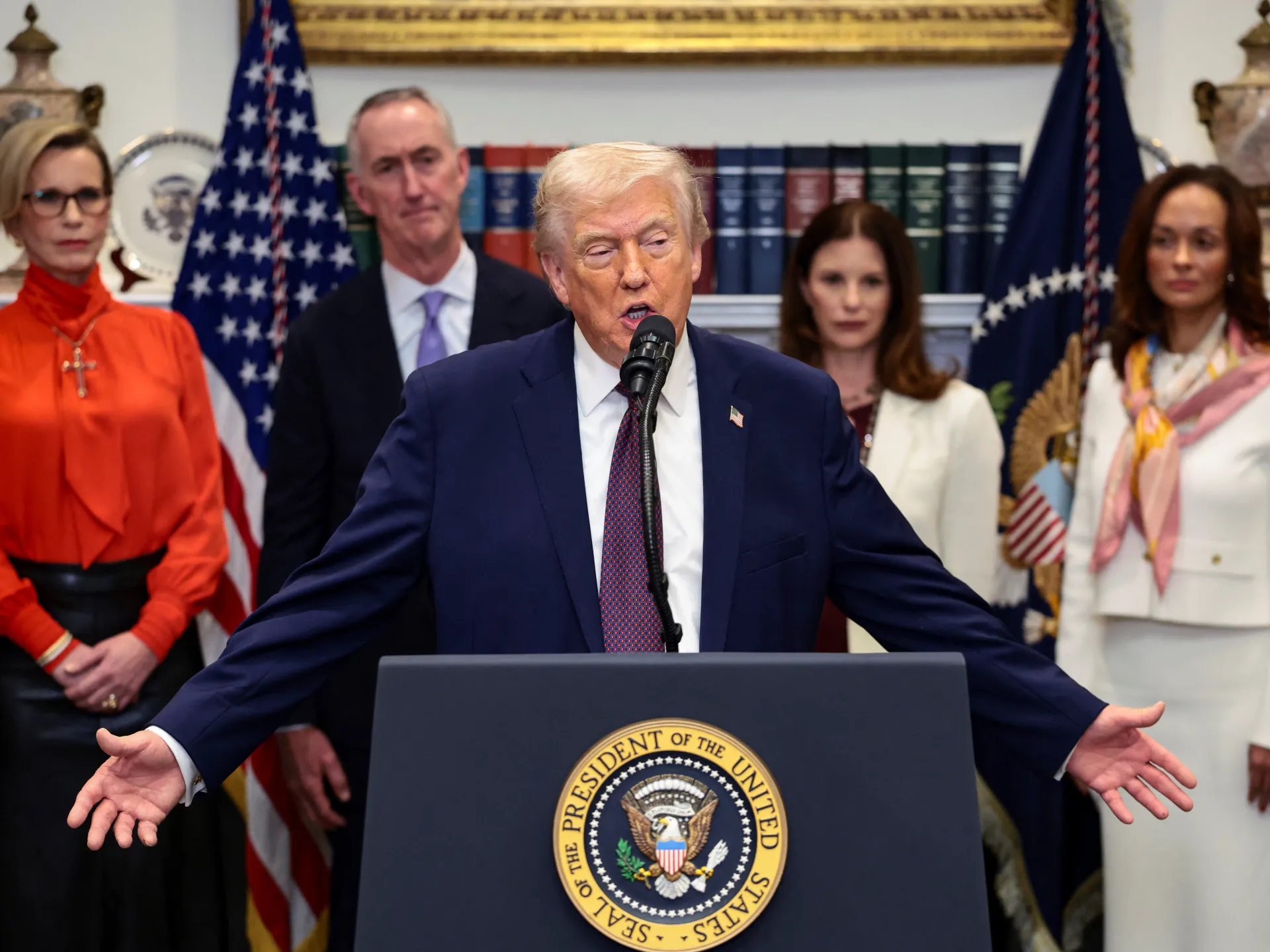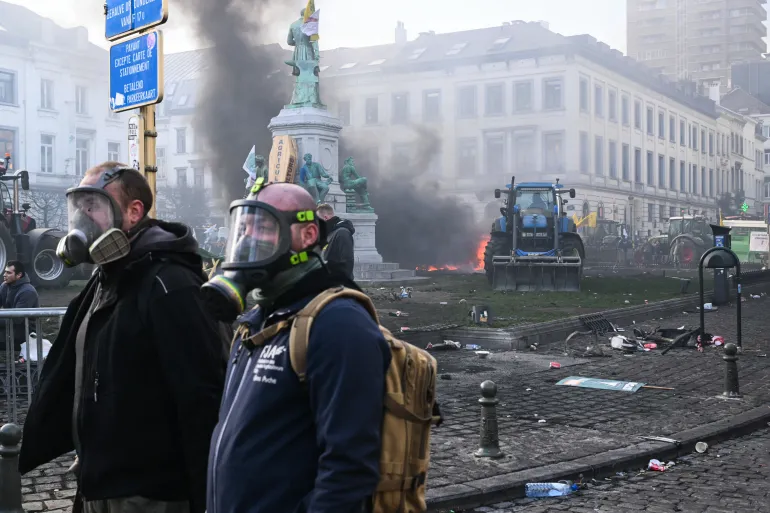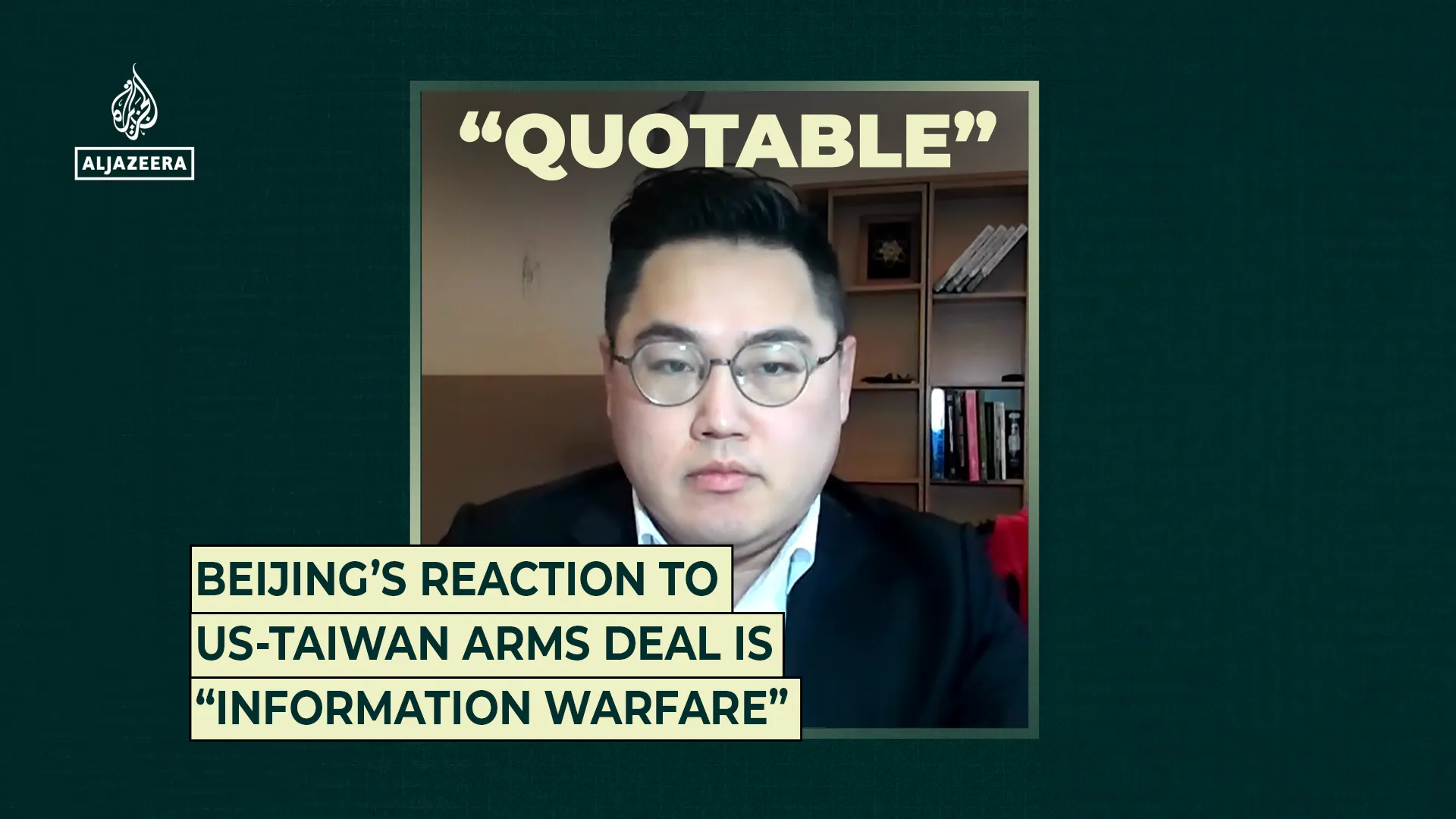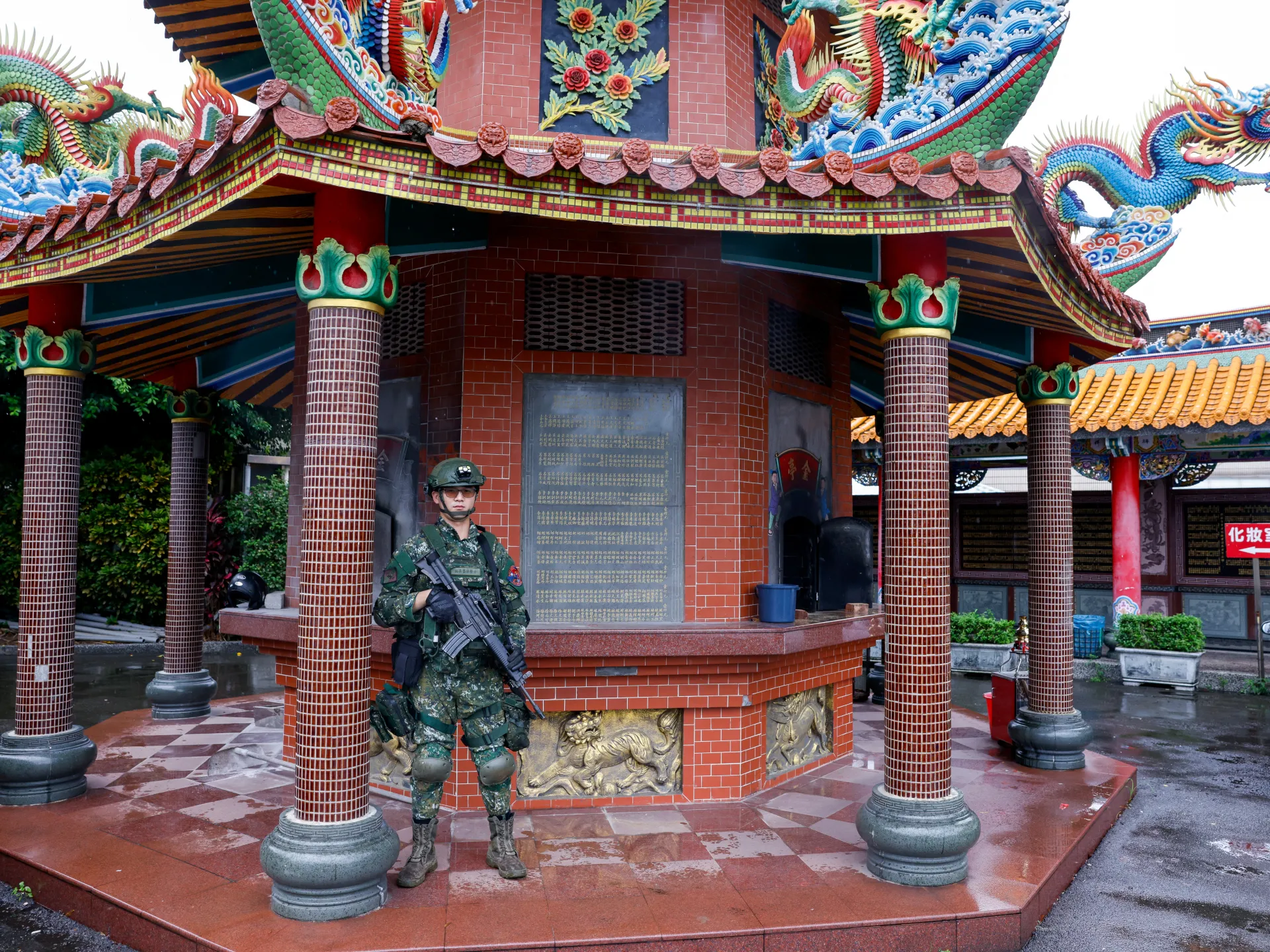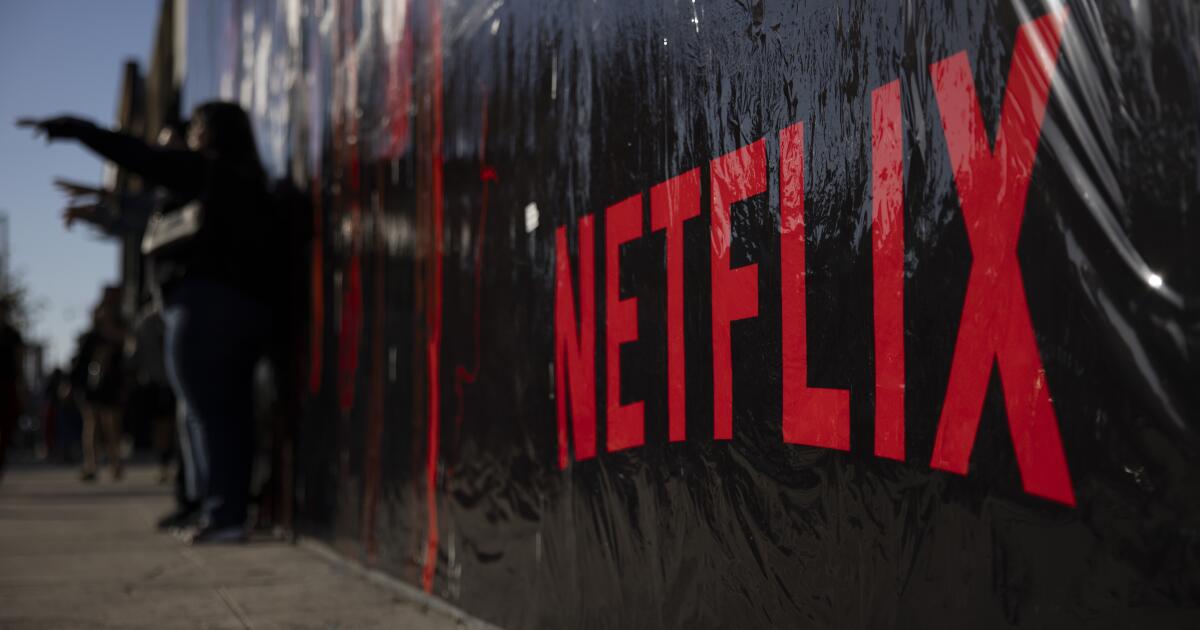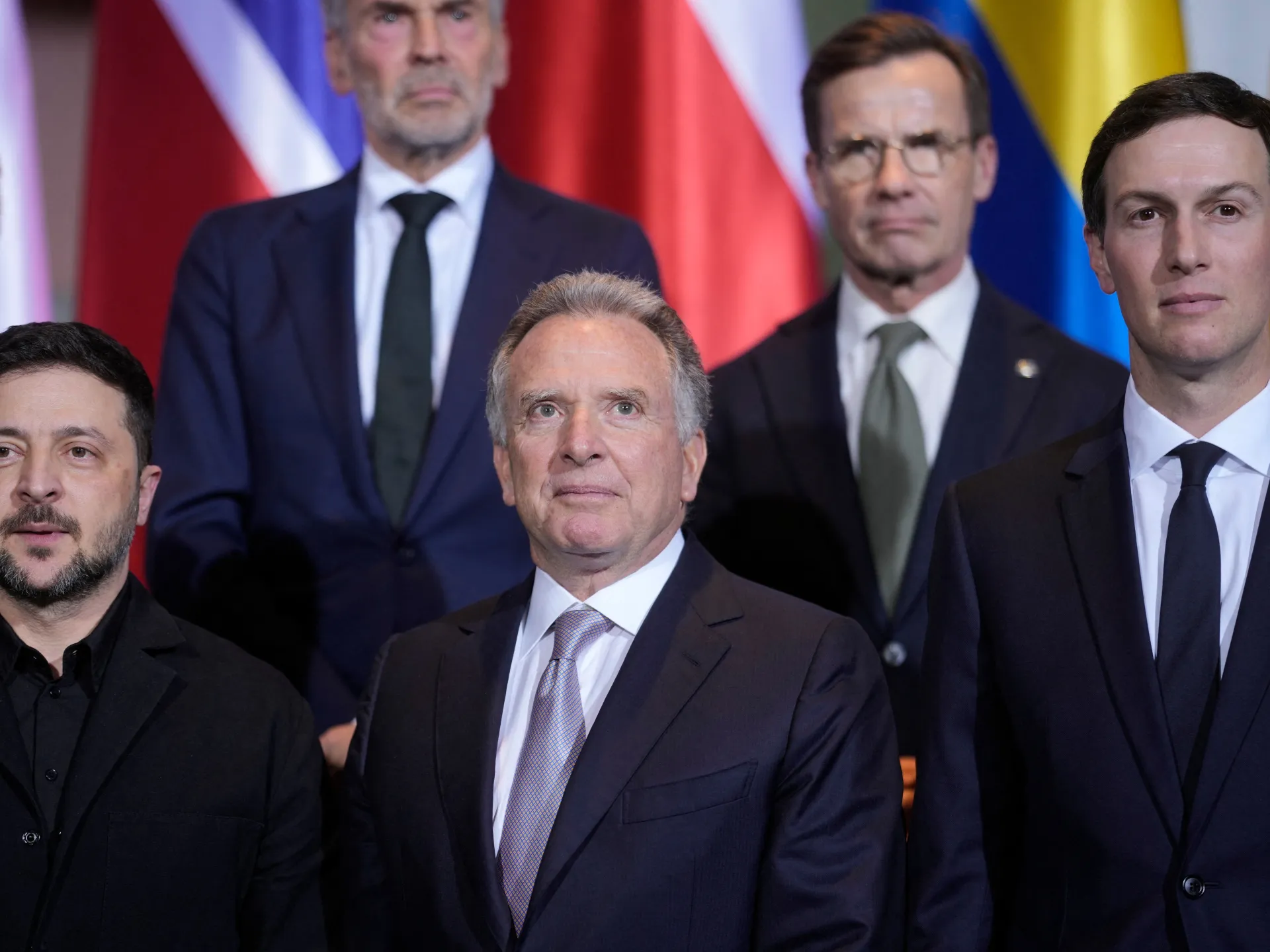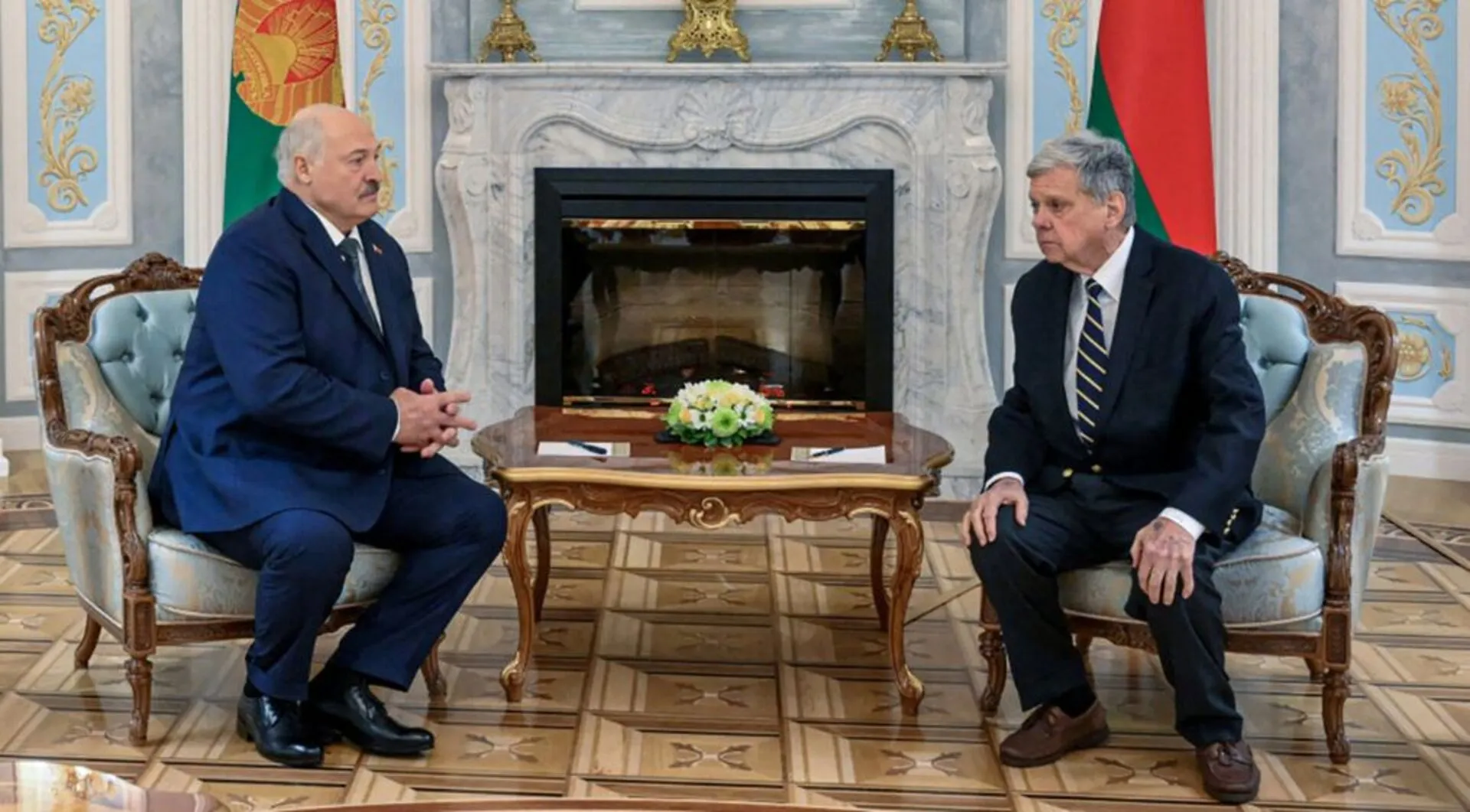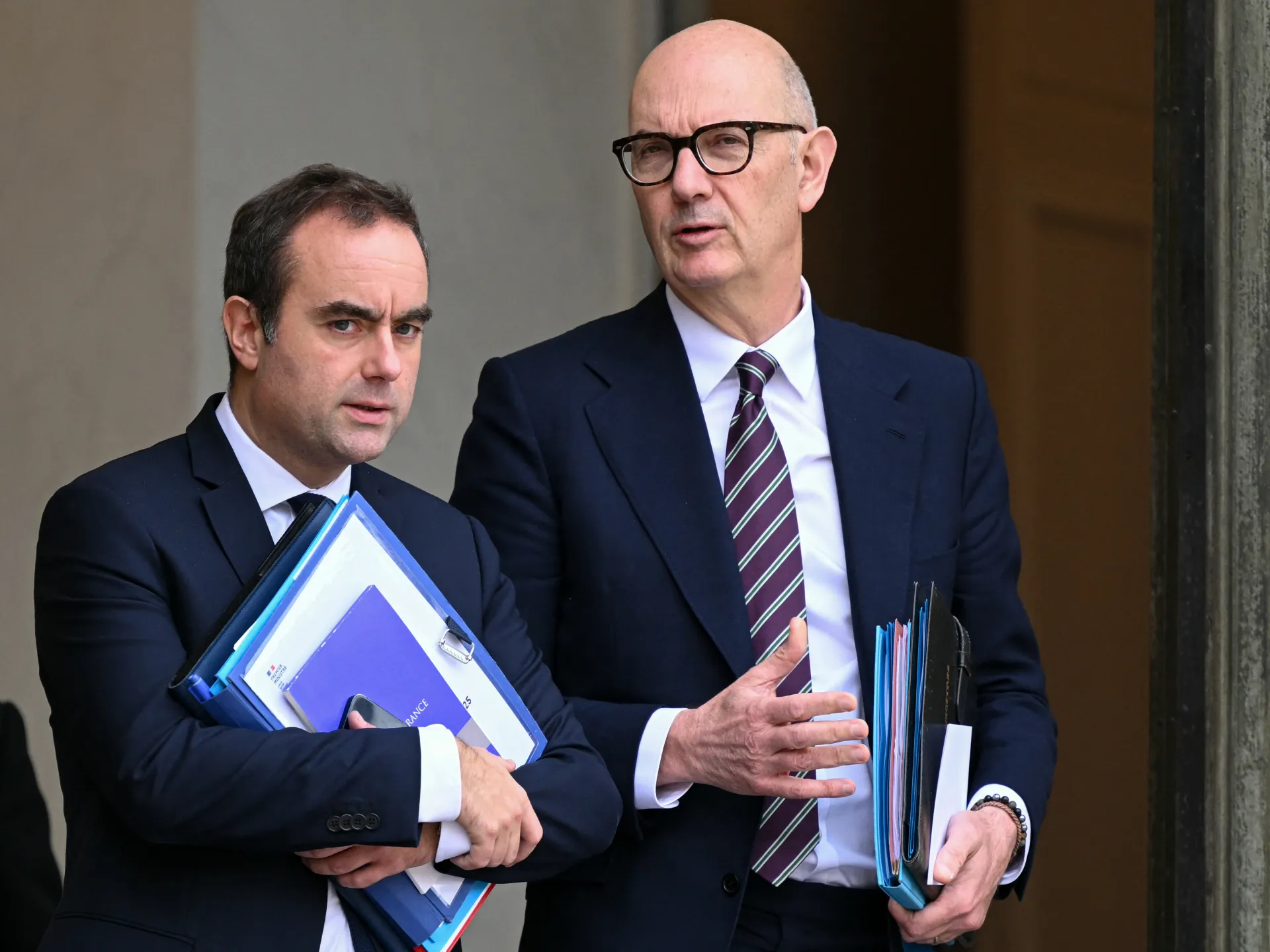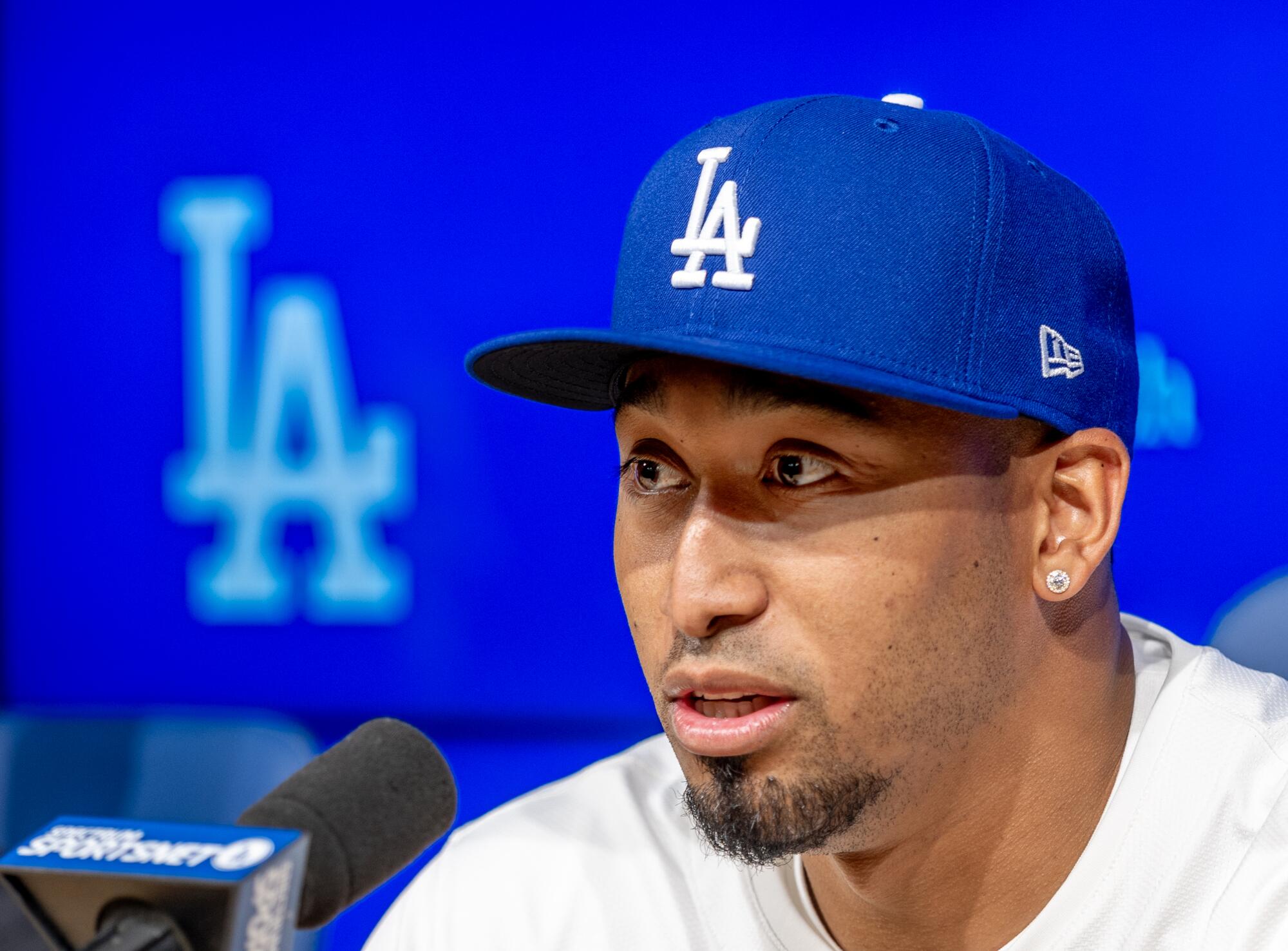The Trump administration’s imminent threat to historic New Deal art
With the ongoing fracas over President Trump’s demolition of the White House’s East Wing, a number of other Trump administration-led attempts to remake the architectural landscape of Washington, D.C., have flown largely under the radar. This includes the sale and possible demolition of the Wilbur J. Cohen Building, which was completed in 1940 and was added to the National Register of Historic Places in 2007.
Part of what makes the building so beloved is a series of 1942 frescoes by Ben Shahn titled “The Meaning of Social Security,” commissioned as part of the Roosevelt administration’s robust New Deal art program. In a recent article in the New Republic, architectural historian Gray Brechin is quoted as calling the Cohen building, “a kind of Sistine Chapel of the New Deal.”
The structure, originally known as the Social Security Administration Building, has served as the headquarters for Voice of America since 1954. In March, Trump signed an executive order cutting funding for the agency that oversees VOA, and most of its staff was placed on administrative leave. In June, more than 600 VOA employees received layoff notices, and the service basically shut down.
At the beginning of this year, Congress agreed to sell the Cohen building, which had been suffering from major maintenance issues. The scope of the threat to the building became clear earlier this month when Bloomberg reported that “The White House is independently soliciting bids to recommend the demolition of the historic buildings [including the Cohen building], without the input of the General Services Administration, which maintains government buildings.”
A petition on Change.org now seeks to oppose the new “accelerated disposal” program.
“Federal properties can be sold quickly with limited public input. As powerful interests move in haste to sell this historic building, we call for the process to be paused and conducted with transparency, respect, and public participation,” the petition, which has garnered more than 4,700 signatures, states.
The Shahn frescoes aren’t the only precious New Deal artworks in danger. Other art housed in the Cohen building include murals by Seymour Fogel and Philip Guston.
I’m arts and culture writer Jessica Gelt wondering when enough is enough. Here’s your arts news for the week.
On our radar

Grant Gershon conducts the Los Angeles Master Chorale at Walt Disney Concert Hall.
(Jamie Phan / Los Angeles Master Chorale)
Disney Hall-e-lu-jah
It’s hard to imagine the holidays without music, and the Los Angeles Master Chorale has three days of caroling and chorusing that should lift anyone’s seasonal spirits. A new addition to the choir’s traditional offerings is the family-friendly “Carols for Kids” (11 a.m. Saturday. Walt Disney Concert Hall), featuring Youth Chorus LA and designed for even the squirmiest children, 6 and under. That will be followed by the “Festival of Carols” (2 p.m. Saturday. Disney Hall), a program of global holiday music. The group’s performance of “Handel’s Messiah” (7 p.m. Sunday. Disney Hall) is a worthy centerpiece of any celebration. If you’re ready to have your own voice be heard, “Carols on the Plaza” (6 p.m. Monday, across the street at the Music Center’s Jerry Moss Plaza), is your chance to join in on free outdoor caroling with family, friends and fellow Angelenos. Festivities conclude with the Master Chorale’s “Messiah Sing-Along” (7:30 p.m. Monday) back at Disney Hall where 2,000 voices will unite for the “Hallelujah Chorus.”
— Kevin Crust
Walt Disney Concert Hall, 111 S. Grand Ave.; Music Center, 135 N. Grand Ave., downtown L.A. lamasterchorale.org
The week ahead: A curated calendar
FRIDAY
The Fruit Cake Follies
In its 27th year, this madcap holiday variety show promises “music, mirth and merriment.”
8:30 p.m. Friday and Saturday, with dinner at 6:30 p.m.; 1 p.m Sunday, with brunch at 11 a.m. Catalina Jazz Club, 6725 Sunset Blvd. Hollywood. catalinajazzclub.com
Guadalupe Maravilla: A Performance
Expanding on his solo exhibition “Les soñadores,” the transdisciplinary artist creates a collective ritual combining sound, vibration and healers from around the world alongside L.A.-based artists.
8 p.m. REDCAT, 631 W. 2nd St., downtown L.A. redcat.org
Piotr Beczala
The Polish-born tenor, known for his work in opera and the classical vocal canon, performs, accompanied by conductor and pianist Kamal Khan.
7:30 p.m. Broad Stage, Santa Monica College Performing Arts Center, 1310 11th St., Santa Monica broadstage.org

“Wet” by Sahar Khoury at Parker Gallery, 2025
(Sahar Khoury / Parker Gallery)
Sahar Khoury
The interdependence of materials and their social and cultural environments inspired the sculptor’s newest solo exhibition, “Wet,” a series of pieces created from ceramic, steel, iron, brass and aluminum.
11 a.m.–6 p.m. Tuesday–Saturday, through Jan. 17. Parker Gallery, 6700 Melrose Ave. parkergallery.com
SATURDAY
Christmas Joy Concert
The free Third@First concert series continues with a program of carols, classic and new.
4 p.m. First United Methodist Church of Pasadena, 500. E. Colorado Blvd., Pasadena. thirdatfirst.org

Sanaa Lathan and Omar Epps in the romantic drama “Love & Basketball.”
(New Line Cinema)
Love & Basketball
Writer-director Gina Prince-Bythewood marks the 25th anniversary of her modern romance classic, starring Sanaa Lathan, Omar Epps, Alfre Woodard and Dennis Haysbert.
7 p.m. Academy Museum, 6067 Wilshire Blvd. academymuseum.org

The cast of “Nutcracker! Magical Christmas Ballet.”
(Konstantin Viktorov / Nutcracker! Magical Christmas Ballet)
Nutcracker! Magical Christmas Ballet
This 80-plus city tour offers a distinct blend of classical ballet with avant-garde circus techniques and global influences, complete with 10-foot-tall animal puppets constructed by Roger Titley. For its 33rd year on the road, the production adds a new character: Sweets the Dog, created by Barry Gordemer of the award-winning puppeteer studio Handemonium.
— Ashley Lee
Noon, 4 and 8 p.m. Saturday. Wiltern Theatre, 3790 Wilshire Blvd., Los Angeles; and 1:30 and 6:30 p.m. Sunday. La Mirada Theatre for the Performing Arts, 14900 La Mirada Blvd. nutcracker.com
SUNDAY
Collecting Impressionism at LACMA
This new exhibition traces how the museum built its collection and its pursuit of legitimacy through early acquisitions of American and California Impressionism and donations of paintings by Edgar Degas and Camille Pissarro from major Hollywood collectors.
Through Jan. 3, 2027. Los Angeles County Museum of Art, Resnick Pavilion, 5905 Wilshire Blvd. lacma.org

Actor Taylor Nichols, left, and director Whit Stillman at a 20th anniversary screening of “Metropolitan” at the 2010 Sundance Film Festival.
(Jemal Countess / Getty Images)
Metropolitan
It’s hard to believe that it’s been 35 years since the young socialites of the “urban haute bourgeoisie” entered our consciousness via filmmaker Whit Stillman’s delightfully droll film and its banter-driven, Oscar-nominated screenplay. Stillman and actor Taylor Nichols will be on hand for a Q&A with the screening.
2 p.m. Aero Theatre, 1328 Montana Ave., Santa Monica. americancinematheque.com
WEDNESDAY

Aloe Blacc and Maya Jupiter host the 2025 L.A. County Holiday Celebration.
(Music Center)
L.A. County Holiday Celebration
The Music Center’s annual spectacular features more than 20 local music ensembles, choirs and dance companies. The free, ticketed event will also be broadcast on PBS SoCal. Aloe Blacc and Maya Jupiter are this year’s hosts.
3-6 p.m. Dec. 24. Dorothy Chandler Pavilion, 135 N. Grand Ave., downtown L.A. musiccenter.org
— Kevin Crust
Dispatch: A director with a human touch

Cameron Watson is the new artistic director of Skylight Theatre Company.
(David Zaugh)
Stage director Cameron Watson has one of the best batting averages in town.
His productions of “The Sound Inside” at Pasadena Playhouse, “On the Other Hand, We’re Happy” for Rogue Machine Theatre at the Matrix and “Top Girls” at Antaeus Theatre Company were morale-boosting for a critic in the trenches, offering proof that serious, humane, highly intelligent and happily unorthodox drama was alive and well in Los Angeles.
Watson’s appointment as artistic director of Los Feliz’s Skylight Theatre Company starting Jan. 1 is good news for the city’s theater ecology. Producing artistic director Gary Grossman, who led the company for 40 years with enormous integrity, built the small but ambitious Skylight into an incubator of new work that embraces diversity and the local community.
Developing new plays is fraught with risk. Watson has the both the artistic acumen and audience sensitivity needed to usher Skylight through this perilous moment in the American theater when so many companies seem to be holding on by a thread.
Watson, like Peter Brook before him, knows how to convert an empty space into a realm of magic and meaning. For Watson, the play’s the thing. But for the spark to happen, actors and audience members need a director as intuitively attuned to the uncertain human drama as Skylight Theatre Company’s new leader. (The director’s current production of “Heisenberg” at Skylight ends Sunday.)
— Charles McNulty
Culture news and the SoCal scene
Moving in stereo
The most Tony-nominated play in Broadway history, “Stereophonic,” is playing at the Hollywood Pantages Theatre through Jan. 2. Times theater critic Charles McNulty caught opening night and wrote that the first touring production fails to capture the high notes of the Broadway original. A few days later, I sat down for an interview at Amoeba Records with Will Butler, the former Arcade Fire multi-instrumentalist who wrote the music for the show. Our interview took place before Butler got onstage with the cast of the show for a short live in-store performance.
Live from L.A., it’s Ben Platt
McNulty also attended opening night of Ben Platt’s 10-day residency at Center Theatre Group’s Ahmanson Theatre, noting that Platt, “wears both his nervous diffidence and his blazing talent on his sleeve.”
Boiling in Brooklyn
Brooklyn was also on McNulty’s itinerary, where he saw Michelle Williams in the new revival of Eugene O’Neill’s “Anna Christie” at St. Ann’s Warehouse. “Michelle Williams seems to have unlimited emotional access. Her inner intensity expresses itself in a frenzy of volcanic feeling that can never be tamped down once it reaches its boiling point,” McNulty writes.
Zakir Hussain tribute
Times classical music critic Mark Swed headed to the Nimoy Theatre in Westwood to watch tabla player Salar Nader perform with the Third Coast Percussion ensemble. The show celebrated the group’s collaboration with the late Zakir Hussain’s “Murmurs in Time,” which was the tabla legend’s last work.
The name game
The Kennedy Center continued its Trump-era transformation Thursday after the board voted unanimously to rename the world-famous performing arts venue The Donald J. Trump and the John F. Kennedy Memorial Center for the Performing Arts. It remains unclear if the move is legal, or if the name change will need to be made official via an act of Congress.
Viva Las Vegas
I got a look at newly revealed architectural plans for the Las Vegas Museum of Art, which is expected to break ground in 2027. Pritzker Prize-winning architect Diébédo Francis Kéré is designing the city’s first freestanding museum and says his ideas were inspired by the red rocks and canyons of the desert surrounding Sin City.
Enjoying this newsletter? Consider subscribing to the Los Angeles Times
Your support helps us deliver the news that matters most. Become a subscriber.
LACMA United
Workers at Los Angeles County Museum of art voted to unionize Wednesday. The vote in favor was 96%, and came after LACMA rejected workers’ requests for voluntary recognition. Staffers have expressed disappointment in management over what they are calling its anti-union campaign.
La malchance
The Louvre is down on its luck. Maintenance issues have lately plagued the famous Paris museum, and then there was that infamous heist. Now workers have voted to strike over working conditions among other complaints.
— Jessica Gelt
And last but not least
Here’s a list that you will either love or hate (I love it): Here are the best tuna melt sandwiches in L.A. and Orange County.


